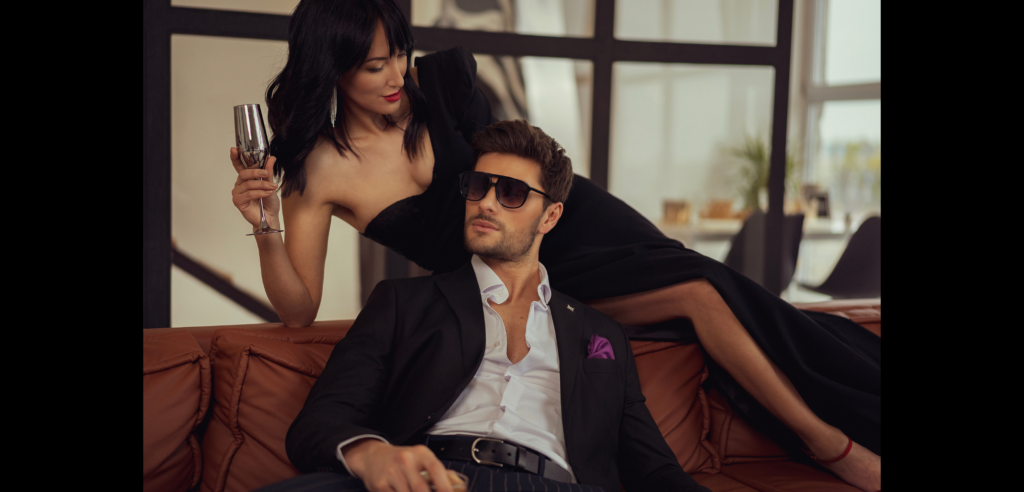PT-141 Peptide.
Also known as Bremelanotide , PT-141 represents a breakthrough in the treatment of sexual dysfunction, extending its applications to both men and women.
PT-141 stands out for its innovative approach in treating erectile dysfunction (ED) in men and hypoactive sexual desire disorder (HSDD) in women by acting directly on the central nervous system (CNS) rather than vascular mechanisms.
This peculiarity clearly differentiates it from drugs such as sildenafil (Viagra) and tadalafil (Cialis), which instead aim to improve erectile function by optimizing blood flow
History and Development of PT-141 BremelanotidePeptide .
The genesis of PT-141 dates back to the accidental discovery during clinical trials of Melanotan II, a synthetic peptide aimed at replicating the effects of tanning without sun exposure.
The manifestation of increased sexual arousal as an unexpected side effect opened new perspectives, culminating in the development of PT-141.
This development underscores the ability of scientific research to transform fortuitous discoveries into potential treatments for complex issues such as sexual dysfunction.
Mechanism of Action.
The mode of action of PT-141 is fundamentally different from traditional PDE5 inhibitors such as Cialis and Viagra.
Its efficacy results from the activation of melanocortin receptors, specifically the MC4R receptor located in the brain.
This interaction promotes the activation of specific neural pathways related to sexual desire and arousal, completely bypassing the circulatory system.
This feature allows PT-141 to exert a direct effect on sexual desire, offering a potential solution for those who do not benefit from vascular treatments.
Applications and Use
- In Women:
FDA approval of PT-141 for the treatment of HSDD in premenopausal women marks a significant step forward in the management of female sexual dysfunction.
The ability to specifically target sexual desire represents a breakthrough in the landscape of available treatments, offering women a targeted treatment option. - In Men:
Despite its initial focus on erectile dysfunction, PT-141 has also found a place among men seeking improved arousal and sexual performance.
Although not formally approved for this indication, off-label use testifies to the interest and perceived potential of this peptide in improving the quality of sexual life.
PT-141 Administration.
The mode of administration of PT-141, through subcutaneous pre-sexual activity injections, proves particularly effective in inducing increased sexual desire and facilitating erection.
This practice allows for accurate dosage control and rapid action, maximizing therapeutic benefits.
PT-141 Side Effects.
Although PT-141 is generally well tolerated, common side effects such as nausea, flushing, headache, and hypertension may require careful management, including possible dosage modification.
Understanding and paying attention to these potential side effects is critical to optimizing the treatment experience.
Differences between PT-141 and MelanotanII.
Both have attracted the attention of both the scientific community and the public for their unique promises and applications.
However, despite their common origin and some superficial similarities, PT-141 and Melanotan serve very different purposes.
Let’s take a closer look at these differences, revealing the veil of mystery surrounding these two compounds.
The story of PT-141 and Melanotan begins with a fortuitous discovery.
Melanotan, initially developed as a sunless tanning agent, aimed to mimic the natural effects of sun exposure by stimulating melanin production in the skin.
Divided into two variants, Melanotan I (afamelanotide) and Melanotan II, the focus was mainly on sunburn prevention and tanning.
But it was with Melanotan II that the story took an unexpected turn, leading to the birth of PT-141.
During testing of Melanotan II, a surprising side effect emerged: an increase in sexual arousal.
This observation paved the way for the development of PT-141, breaking away from the original intent of tanning to focus on the treatment of sexual dysfunction.
Thus, while Melanotan continues to be associated with tanning, PT-141 has taken a completely different path.
The heart of the differences between PT-141 and Melanotan lies in their mechanisms of action.
Melanotan acts on the melanocortin receptors responsible for skin pigmentation, stimulating melanin production for a deeper tan. This process, although useful for those seeking a tan without the sun, has little to do with the sexual sphere.

PT-141 chooses a road less traveled, directly affecting the central nervous system.
By activating melanocortin receptors, specifically the MC4R receptor in the brain, PT-141 stimulates neural pathways involved in sexual desire and arousal.
This direct action on the brain distinguishes PT-141 from traditional treatments for sexual dysfunction, which focus on improving blood flow.
While Melanotan finds its use among those who desire a tan without the risks associated with UV exposure, PT-141 targets a different audience, and has become a hope for men and women facing challenges in their sex lives.
Approved by the FDA for the treatment of hypoactive sexual desire disorder in pre-menopausal women, PT-141 offers a new perspective on an often underestimated problem.
The administration of these peptides further reflects their different destinations.
While subcutaneous injections are common to both, the context and expectations around their use could not be more different.
PT-141, with its pre-sexual activity administration, promises enhanced intimate moments away from the sun and tan that Melanotan seeks to replicate.
PT-141: Dosage Guide for Women and Men.
Peptide PT-141, also known as Bremelanotide, has distinguished itself as a revolutionary treatment for sexual dysfunction, offering hope and new possibilities for those seeking to regain control of their sex lives.
Unique to PT-141, it acts on the central nervous system to stimulate sexual desire, breaking away from traditional treatments that aim to improve erectile function through blood flow.
But when it comes to administering it, the right dosage can make the difference between success and failure. We explore how PT-141 dosing varies between women and men, providing clear guidance for navigating these uncharted waters.
PT-141 Dosing for Women.
In 2019, the FDA approved PT-141 for the treatment of hypoactive sexual desire disorder (HSDD) in premenopausal women.
This represents a significant step forward in recognizing and addressing women’s sexual needs, an area often overlooked in medical research.
For women, the recommended dose of PT-141 is 1.75 mg, administered by subcutaneous injection into the abdomen or thigh about 45 minutes before the onset of sexual activity.
It is crucial not to exceed a single dose within 24 hours and to limit use to no more than 8 doses per month.
This dosage has been calibrated to optimize efficacy while reducing side effects, such as nausea, hot flashes, and headaches, that some women may experience.
Dosage of PT-141 for Men.
Although PT-141 was approved specifically for women, men with erectile dysfunction (ED) or reduced libido have also experienced the benefits of this treatment.
However, it should be noted that, for men, the use of PT-141 to improve sexual function remains off-label, as it has not been formally approved for this indication.
In the community of men using PT-141, dosages may vary widely depending on the individual and the desired response.
Anecdotes and preliminary reports suggest that dosing for men can range from 0.75 mg to 2 mg, with many finding an optimal point around 1 mg.
As with women, the injection is administered subcutaneously, with users reporting increased sexual desire and erectile capabilities within hours of injection.
Important Considerations.
Regardless of gender, those who choose to use PT-141 should do so under the guidance of a health care professional.
In addition to determining the appropriate dosage, a physician can monitor the effects and manage any side effects.
It is also critical to discuss any existing medical conditions or medications being used, as these may affect the safety and efficacy of PT-141.
PT-141 represents a breakthrough in the treatment of sexual dysfunction, offering new hope for men and women eager to improve their sexual health.
As research continues and dialogue expands, it is essential that the use of PT-141 is informed, informed and, most importantly, safe.
With proper attention to dosing and medical supervision, PT-141 can be a valuable addition to many people’s sexual well-being.










